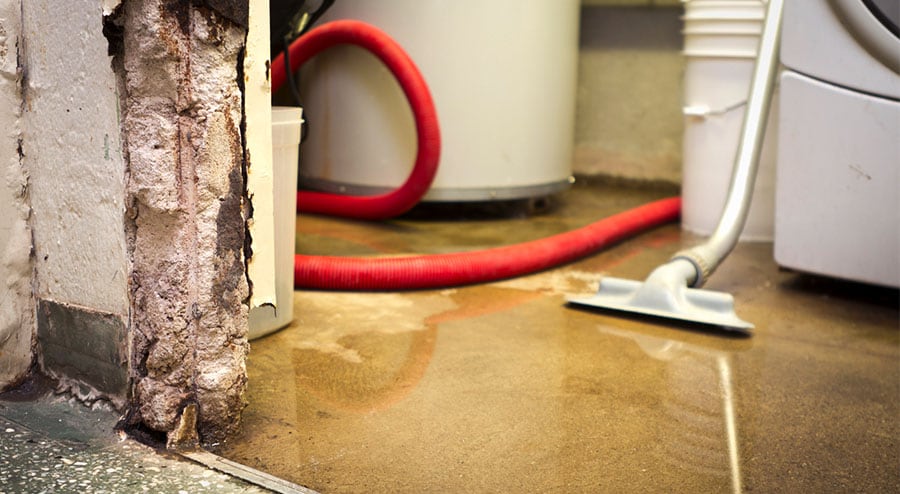
If you are a homeowner in the Toronto area and have a basement on your property, you know how important it is to prevent flood damage. Nothing can be more devastating than inches or feet of water covering your basement floor and threatening the structural integrity of your home or property, and emergency water removal is not something you can handle alone. Don’t put yourself at risk for mold problems and know when to call a professional restoration company in Toronto to help with your basement water.
When there is a significant amount of packed snow and ice on the ground around your home or in the surrounding area, warmer temperatures cause the ice and snow to melt and move, leading to flooding in neighborhoods, streets, parks and rivers in the Toronto area.
Accumulations of snow and ice in yards, on roofs, in ice dams and elsewhere around homes can lead to rapid movement of running water as temperatures melt. While buildings near rivers or streams may be particularly vulnerable to flooding, any home or business faces potential flooding due to increased water accumulation and runoff.
Restoration mate is a 24 hour water damage restoration in Toronto. Wet carpet in flooded basement from seepage
How To Prevent Basement Flooding From Melting Snow
Snowmelt flooding can be dangerous anywhere, from roads to rivers to residential areas, but the most common water damage to homes and businesses usually occurs in basements. While you can’t stop the snow from melting, you can try to keep it away from the foundation of your property. Here is the procedure:
Clear an area 5 feet or more around your building’s foundation: Keep this number in mind when shoveling or blowing snow. By keeping snow from accumulating where it can seep through foundation walls, you have a better chance of avoiding basement flooding.
Test your sump pump regularly: Make sure it’s working properly to prevent water damage in your basement.
Be aware of cracks in the walls and corners of your foundation: Inspect the foundation regularly and be sure to repair any cracks. Although water can still seep through porous concrete, sealing large cracks will help prevent seepage.

Remove snow from roofs, ice dams and overhangs: These areas collect large amounts of snow and ice that melt and flow directly over your base. Melting snow and ice can also seep through your roof, so if it’s safe to do so, remove ice and snow from your roof to prevent ice dams from forming.
Make sure downspouts run 4-6 feet away from your home: This will help prevent water from seeping inside.
Types Of Water Damage To Look For In Your Toronto Basement
If you’re already experiencing thawing seepage, don’t ignore the problems and delay cleanup and restoration when flood damage could lead to more problems. Watch out for these common types of water damage in your basement:
Structural damage: Damp walls can weaken, crack, crumble and collapse. Damp drywall and insulation can become a breeding ground for mold in your basement. Look for large cracks and moisture damage around baseboards to spot signs of water damage before it becomes dangerous.
Mold Growth: Water damage can lead to mold growth, especially in dark, damp, and humid areas (such as basements). Try to catch mold spots within 48 hours of flooding and contact a Toronto restoration company for professional mold remediation services.
Tips For Dealing With Basement Flooding Due To Snowmelt
When snowmelt floods your basement, follow these tips:
- Never ignore what looks like small water damage.
- To protect your health, address mold problems immediately or call for help.
- Contact a professional restoration company in the Toronto area to clean and dry the area as soon as possible.
